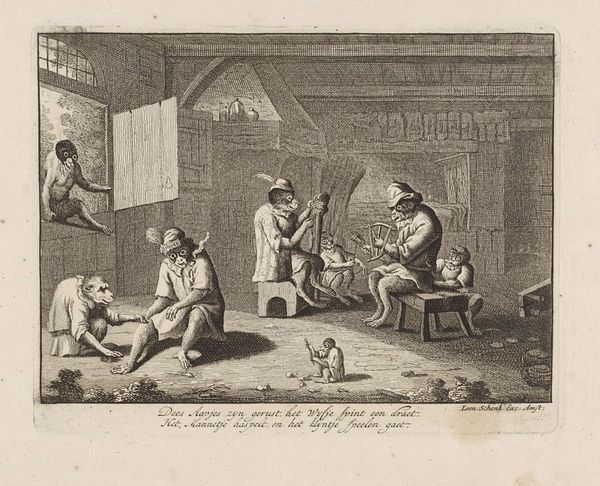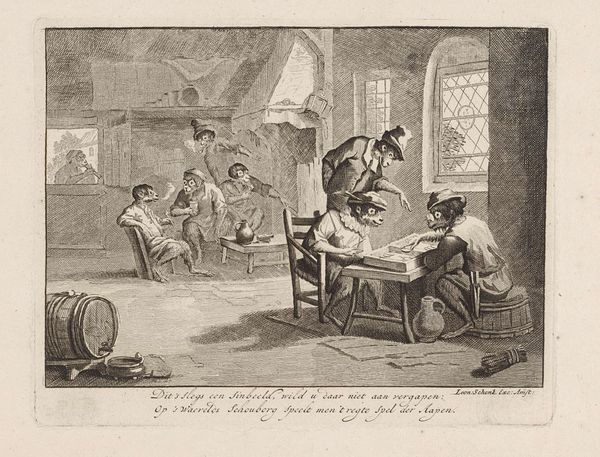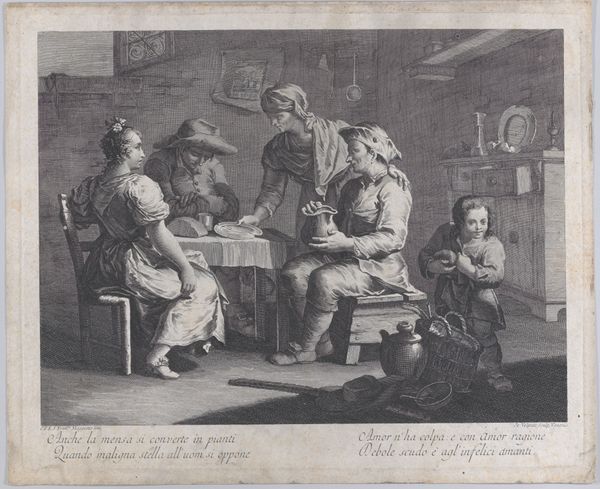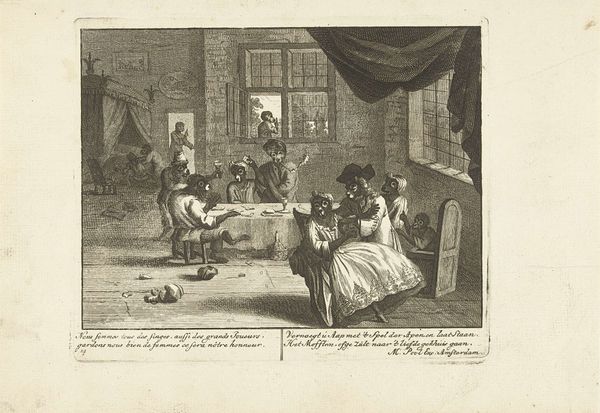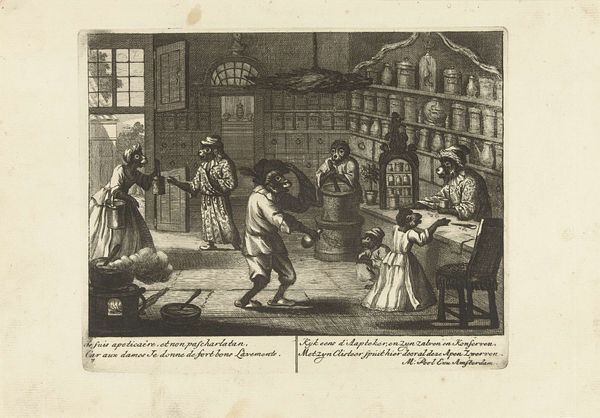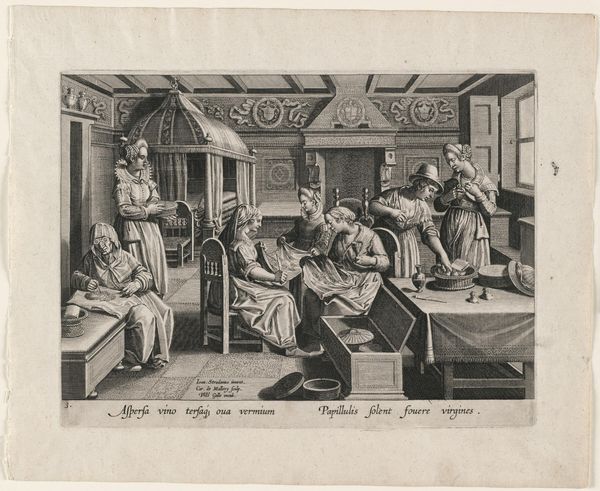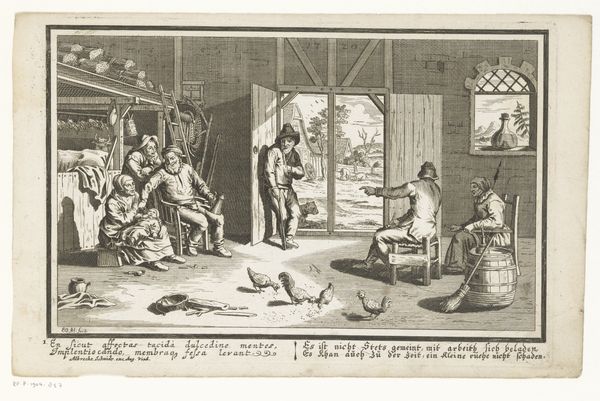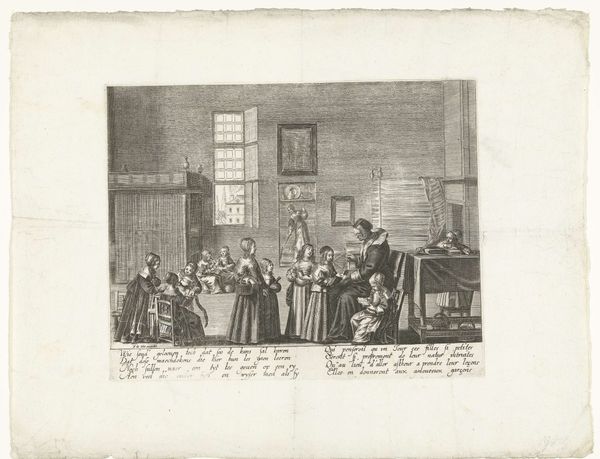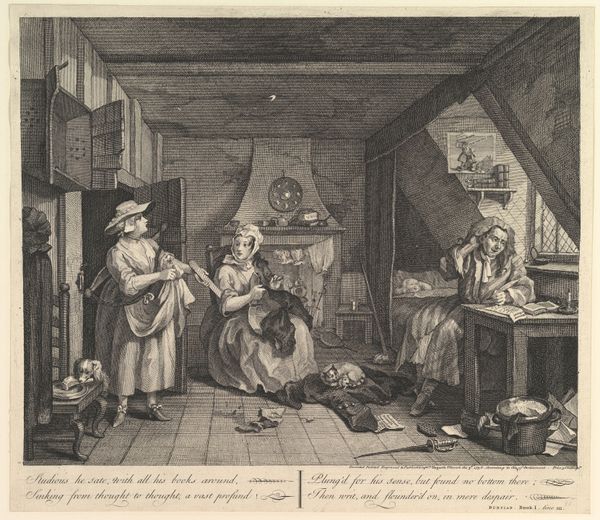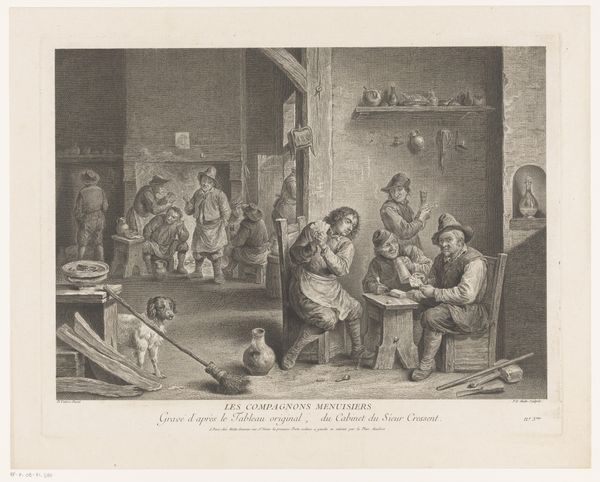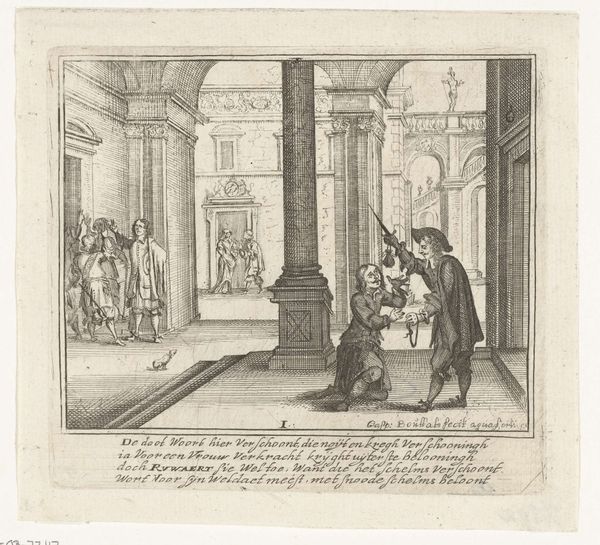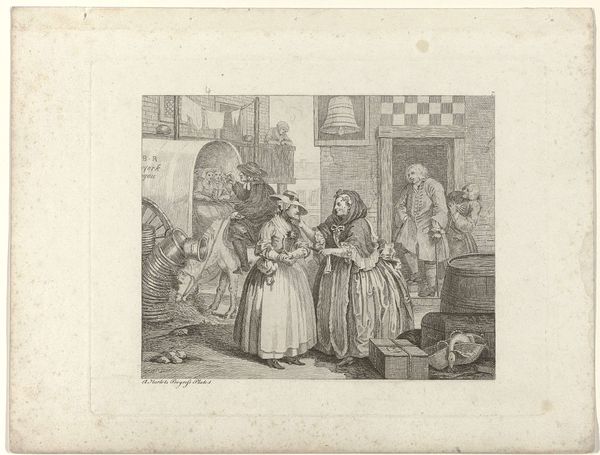
print, engraving
#
medieval
#
narrative-art
#
dutch-golden-age
# print
#
old engraving style
#
genre-painting
#
engraving
Dimensions: height 193 mm, width 244 mm
Copyright: Rijks Museum: Open Domain
Curator: We’re looking at "Het Gebed voor de maaltijd," or "The Prayer Before Meal," an engraving created sometime between 1635 and 1645. It's an interesting work attributed to Stephan de Praet, showcasing a genre scene typical of the Dutch Golden Age. Editor: My immediate impression is one of stark simplicity. The monochromatic palette emphasizes a humble scene of familial piety, though the close details add a layer of complex character. It gives a sense of both warmth and constriction, of lived lives within tight boundaries. Curator: That tension is key. De Praet uses a rigorous structure—horizontal lines of the wainscoting bisect the scene and provide an interesting foundation for a hierarchy within the domestic space, but there is this strong emphasis on the everyday practices within this dwelling. Semiotically, one could interpret the text at the bottom, which repeats in Latin: "the more meager the dwelling, the lesser the cross.” This becomes a symbolic framing element for a space concerned with more meager forms of life. Editor: Precisely! It's about more than just aesthetic structure. Look at the details of the family: a mother with head covering, the youngest being fed by their mother, the seated man praying for sustenance, but there is also an older servant or family member preparing dinner, possibly positioned as outside the domestic life happening front and center. This adds complexity; the image, while celebrating piety, can be seen as commenting on broader issues of social inequality and roles, reminding us that displays of family cohesion could often mask more complex realities of social dependence during this period. This intersects the reality of labour, particularly what a devotional space owes to the unpaid labour, mainly on the woman who prepares the meal but is also a key component to this holy transaction. Curator: An excellent point about how such depictions reflect a complex tapestry of social dynamics, rather than just a quaint display of religious tradition. Still, one cannot help admire De Praet’s ability to create a complex interplay between the various structural components of the art form, in spite of these inequalities. The sharp lines which highlight this interplay become an index of domestic labour. Editor: Ultimately, this engraving serves as a powerful reminder of the narratives that art can simultaneously uphold and challenge, inviting us to question idealized representations of both family and devotion. Curator: Indeed, seeing past face value invites much needed contemplation, in line with current views.
Comments
No comments
Be the first to comment and join the conversation on the ultimate creative platform.
